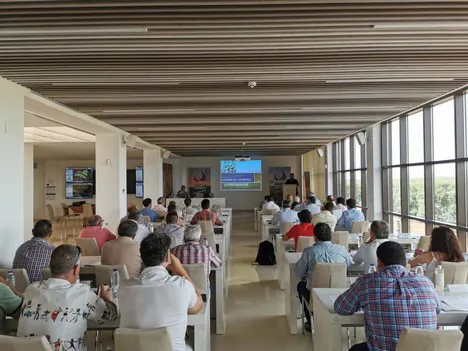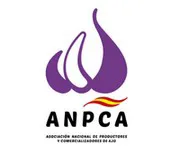The Spanish early garlic harvest has begun with favorable weather conditions and no rain related problems, with very good quality bulbs and good calibers, as reported in the extraordinary general meeting of the National Association of Producers and Marketers of Garlic, ANPCA.
This entity is currently the largest European association of producers and marketers of garlic, with an area totaling 15,397 hectares in 2022 and more than 256 million kilos marketed in the latest campaign, which represents a figure of more than 80% of the total marketed in Spain, and 65% of the total in Europe. At present, it has 67 associated marketing companies and almost 1,800 garlic producers.

The meeting served to analyze the crop's situation in the rest of Spain's regions. The start of the harvest is also imminent in Castile-La Mancha, and there are good production prospects in areas of Extremadura and Castile-Leon. As for the analysis of the international situation, carried out by Andrés García, treasurer of the association, uncertainty is the general trend in all sectors and garlic could not escape it. This uncertainty is mostly a consequence of the situation of international transport, the inflation, the strength of the dollar or the harvest situation, as well as the forecasts of other garlic producing and marketing countries.
According to the president of the association, Juan Salvador Peregrin, "this new harvest season appears to be very challenging when it comes to the hiring of labor. Producers are being forced to hire permanent discontinuous staff from the outset without knowing whether the worker will be suitable or not to work in the field. It is clearly a temporary job, which in many cases fully depends on how the crop develops, which is unforeseeable."
Other topics discussed included the new Food Chain Law and its problematic application to international operations in a sector where almost 60% of the production is exported. "In our relations with international customers, we are forced to comply with the buyer's legislation, which we are not familiar with in many cases, because international buyers are not willing to accept this law," said Antonio Escudero, vice-president of ANPCA.
Another issue of great concern in the sector is the lack of phytosanitary products. A table was presented to compare the active materials authorized for garlic in Italy, France and Spain, with an analysis of differences and the possibility of taking action to obtain an authorization for Spain. The secretary of the association, José Carlos Arroyo, said that "the Farm to Fork strategy undertaken by the European Commission is pushing the possibility of growing garlic in Europe to the limit."
To close the event, the leading company in biostimulants and biosolutions SERVALESA presented the newest additions to its portfolio of products for garlic, with two specific products for the sector to ensure good crop health and a biostimulant to promote the plant's development in the stages when this is most necessary.
 For more information:
For more information:
ANPCA
Plaza Arrabal del Coso, s/n. Aptdo 66.
16660 Las Pedroñeras, Cuenca. Spain
Tfno. y Fax: 967 16 10 11
www.anpca.es
info@anpca.es
